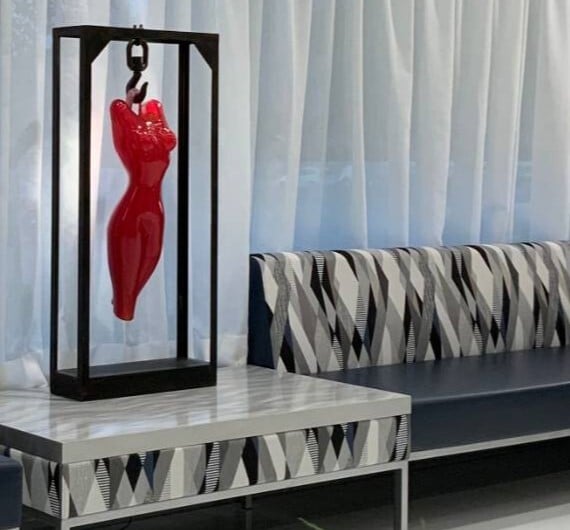A brow lift is an effective facial procedure that can revitalize drooping or lined foreheads, helping you to look less angry, sad, or tired.
Dr. Mark D. Epstein, a dual board-certified plastic surgeon and Fellow of the American College of Surgeons, uses minimally invasive or traditional open techniques to alter the muscles above the eyes. This procedure smooths lines and raises the eyebrows for a more youthful appearance.

Candidates
Brow lifts are typically performed on patients aged 40-70 to counteract the effects of aging. However, anyone with lined or inelastic skin on the forehead – whether caused by muscle activity or inherited conditions – is eligible. The procedure is performed in our accredited office-based surgery facility, usually under local or general anesthesia, depending on the type of brow lift and the nature of other procedures performed simultaneously.
If you want to determine whether a brow lift is appropriate for you, look into a mirror with the palms of your hands on either side of your eyes above your eyebrows. Pull the skin back from your eyes and raise your forehead. This roughly simulates the effect of a brow lift.
There are also several issues to consider with a brow lift.
The first is the position of the medial (inner), central (middle), and lateral (outer) portions of the brow. If you raise the medial and central portions too high, you may look like you are asking a question. One of the signs of a very aesthetically pleasing female brow is a high lateral arch, sometimes higher than the central and medial portions.
The other issue is distinguishing brow skin from upper eyelid skin. Upper eyelid skin is very thin, whereas brow skin (not the eyebrow-bearing skin but the tissue just below the eyebrows) is much thicker. If that skin is ptotic (sagging), there will be heaviness over the upper eyelid and a loss of the "eyeshadow area," the space between the upper eyelashes and the brow itself.
It is important to understand that you cannot remove brow skin as part of an upper blepharoplasty (eyelift). Rather, you should remove the excess skin of the upper eyelid and then elevate the brow back to its correct anatomic position. Sometimes, all you need to do is lift the brow laterally, which is a simple matter in most cases.
Brow Lift Procedures
Brow lifts may be performed in one of two ways: with conventional methods, in which the incision is hidden beneath the hairline (for patients with thinning hair, who are bald, or who have had previous surgery in the area, the incision will likely be moved somewhere less conspicuous), or with an endoscope, in which a tiny camera and instruments are inserted through a few small incisions. Both techniques produce similar results. You and your surgeon will discuss which option is better for you.
Conventional (Open) Brow Lift
This can be performed via a "coronal incision" or a limited, lateral incision. They both have different purposes.
Coronal Brow Lift
An incision is made across the top of the head from ear to ear, just behind the hairline in the front. The forehead is peeled down over the face, which gives excellent exposure to the forehead and brow muscles.
This technique elevates all portions of the brow. The downsides are the large incision, the potential for hair loss in the scar, and numbness on the scalp behind the incision. This procedure can be combined with a facelift.
This procedure was previously commonly performed; however, it is less popular now because better techniques have been developed.
Lateral Brow Lift
Many patients need the outer brow lifted. This procedure can be performed using a small four-centimeter (about 1 3/4 inches) incision within the hairline near the temple. It has much less morbidity (problems) and is a nice complement to a facelift or eyelift (blepharoplasty). In most cases, it can be performed in less than half an hour.
Endoscopic Brow Lift

This technique works well in adjusting the muscles of the brow but is somewhat lacking when it comes to elevating the lateral brow when the skin is lax.
Which Technique Should You Choose?
The endoscopic technique is best for elevating the central brow, and the open coronal technique is best for both the central and outer brows. The open lateral brow technique is best for the lateral brow, especially when redundant skin is present.
Patients with very short hair may want to let it grow before undergoing the open coronal technique surgery to better camouflage the healing scar.
Recovery
There are several important factors to keep in mind regarding brow lift recovery, including the following:
- Incision discomfort: Traditional surgery patients may experience numbness and discomfort at the incision. Numbness could be replaced by itching, which will likely subside within six months.*
- Elevation: Your head may need to be elevated for two to three days to reduce swelling.
- Bandage and stitch removal: Bandages are removed in one to two days, and stitches or clips are removed in two weeks.
- Swelling and bruising: These symptoms usually fade by the third week.
- Hair loss: Hair near the incision may fall out or thin, but normal growth should return within weeks or a few months.*
- Muscle weakening: Sometimes, the muscles that elevate the brow are temporarily weakened after the procedure. The ability to elevate the brows should return in a few weeks, but this is rarely permanent.
With both procedures, you will be on your feet and able to wash your hair in a day or two, and many patients return to work or school in 7-10 days or less.
Complications may include temporary numbness, nerve injury, hair loss along scar edges, formation of a broad scar requiring surgical correction, infection, and bleeding. These symptoms are rare and usually minor, especially when a skilled provider like Dr. Epstein performs the surgery.
FAQs
Can I Combine Other Procedures With a Brow Lift?
Yes, you can undergo a brow lift alongside other facial procedures for a more balanced and youthful appearance. Many patients choose to pair a brow lift with procedures such as:
- Eyelid Surgery (Blepharoplasty): Blepharoplasty helps address droopy eyelids or under-eye bags for a refreshed look.
- Facelift (Rhytidectomy): A facelift targets sagging skin and wrinkles in the lower face and neck.
- Fat Grafting: Fat grafting adds volume to hollowed areas, such as the temples or cheeks.
Combining procedures can reduce downtime and provide more comprehensive results. If you're considering multiple treatments, consult Dr. Epstein to determine the best approach based on your aesthetic goals.
How Long Will My Brow Lift Results Last?
Brow lift results are long-lasting. The surgery generally provides a more youthful and refreshed appearance for 10 to 15 years or longer. However, the longevity of the results depends on factors such as:
- Skin Quality and Elasticity: Individuals with good skin elasticity tend to enjoy longer-lasting outcomes.
- Lifestyle Factors: Smoking, excessive sun exposure, and poor skincare can accelerate aging and affect results.
- Surgical Technique: Endoscopic brow lifts may have slightly shorter longevity than traditional ones.
- Natural Aging Process: While a brow lift can turn back the clock, the face will continue to age.
Will I Have Visible Scars After a Brow Lift?
Scarring following a brow lift is usually minimal and well-concealed. Dr. Epstein strategically places incisions within the hairline or natural creases of the forehead.
Scarring varies depending on factors like:
- Incision Placement:
- Endoscopic Brow Lift: Dr. Epstein makes small incisions within the hairline, resulting in minimal, difficult-to-detect scarring.
- Coronal Brow Lift: A longer incision runs across the scalp but remains hidden within the hair.
- Lateral Brow Lift: Dr. Epstein makes small incisions within the hairline near the temple.
- Genetics: Some individuals heal with nearly invisible scars, while others may be prone to thicker scars.
- Post-Surgical Care: Proper wound care, avoiding sun exposure, and following the surgeon's instructions can help scars fade over time.
Most scars from a brow lift fade significantly within six months to a year and are not noticeable under normal conditions.
Can a Brow Lift Improve Vision Obstructed by Sagging Brows?
A brow lift can improve vision that is obstructed by sagging brows.
When the eyebrows droop due to aging or genetics, excess skin can weigh down the upper eyelids, creating a hooded appearance that may partially block peripheral vision. Lifting the brows reduces this heaviness, allowing for a clearer and more open field of vision.
Why Choose Dr. Mark D. Epstein?
Dr. Mark Epstein is a dual-board-certified plastic surgeon (certified by the American Board of Plastic Surgery and the American Board of Surgery) with over 25 years of experience. He is a trusted choice for those seeking brow lift surgery.
Dr. Epstein blends art and science to create natural-looking results. He utilizes advanced technologies and surgical techniques and tailors each procedure to his patients' unique facial structures. His team includes two board-certified anesthesiologists with decades of combined experience, ensuring safety and comfort throughout your procedure.
Schedule a Consultation
To learn more about brow lifts, contact the office of Dr. Mark Epstein. Call us at (631) 689-1100 to schedule a consultation. Our practice serves Long Island and surrounding areas in New York.
*Individual results may vary


